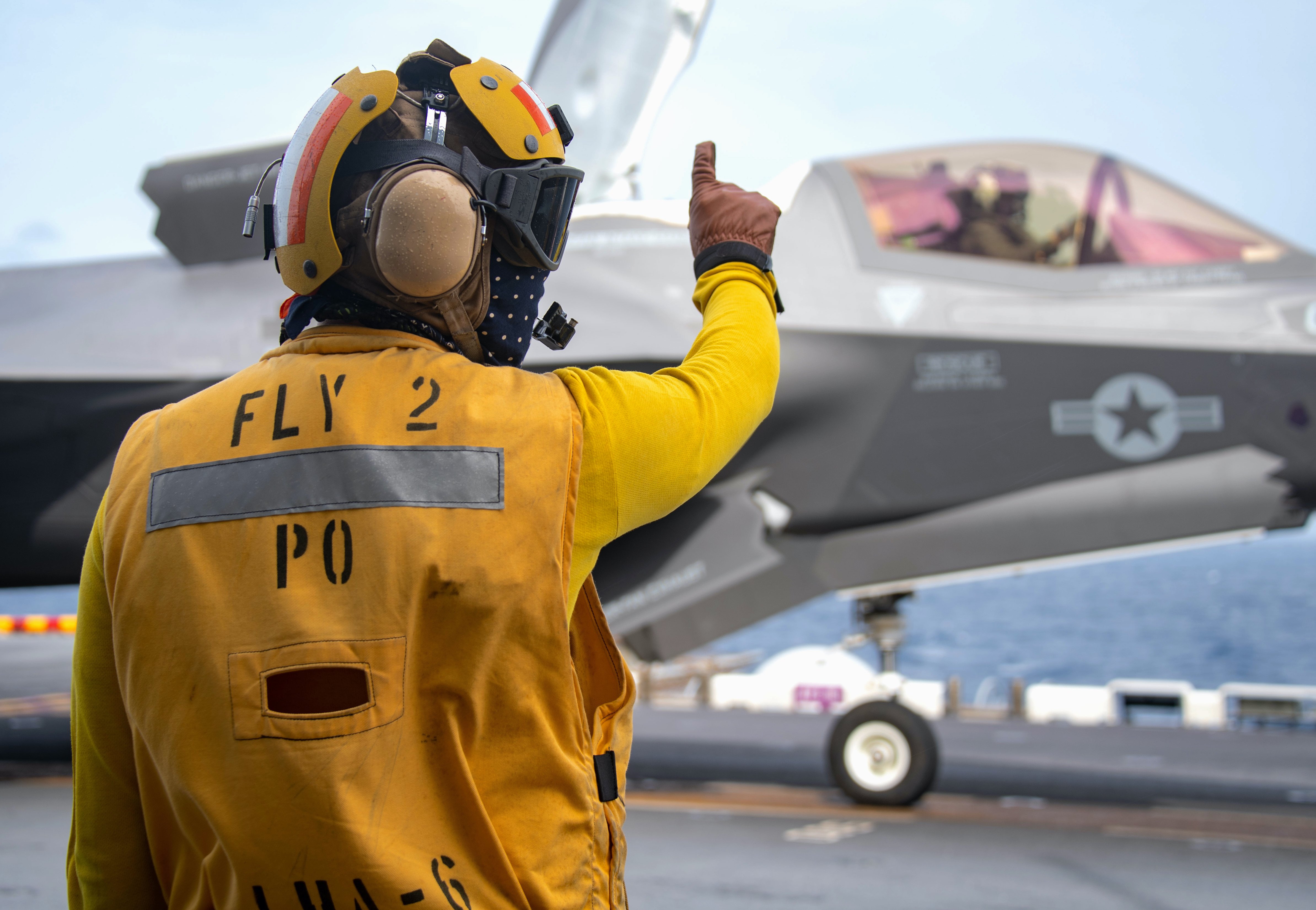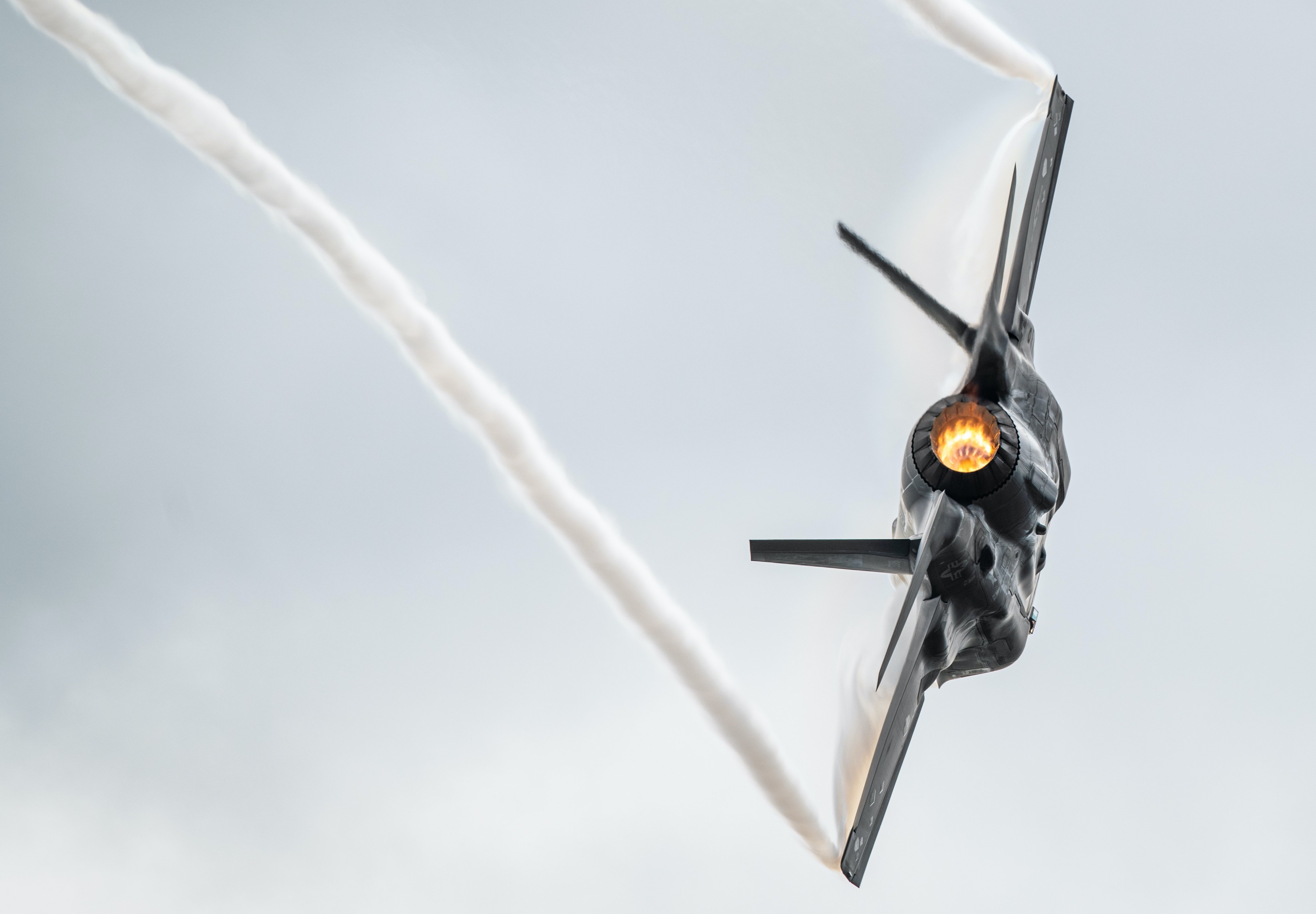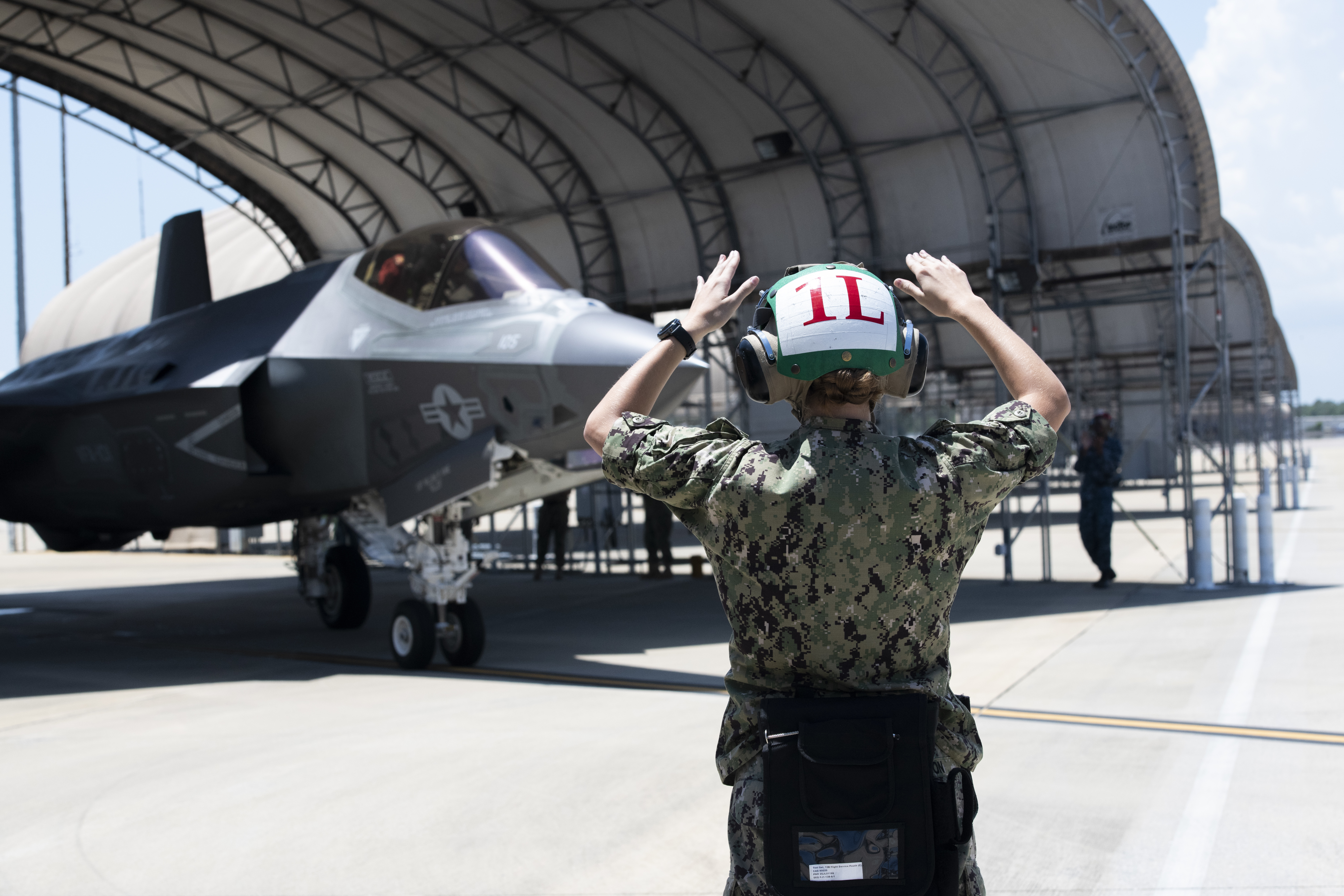
The House Armed Services Committee has little appetite for buying any F-35 Joint Strike Fighter planes beyond the official Biden administration request – in contrast to the past seven years, when Congress has added a whopping 97 planes beyond the president’s budget request – as a result of low readiness rates and ongoing maintenance and supply challenges.
In fact, one lawmaker said the current readiness hole the joint aviation program finds itself in is partly due to Congress’ willingness to buy new planes rather than invest in spare parts and an adequate maintenance and sustainment strategy in recent years. Rep. John Garamendi (D-Calif.), the chairman of the HASC readiness subcommittee that jointly hosted a hearing today on the F-35 program with the HASC tactical air and land forces subcommittee, hardly contained his anger as he spoke to JSF industry and military leaders.
“Don’t expect more money; do not expect to have more planes purchased than authorized in the president’s budget. That’s not going to happen. The 97 planes that were added over the last seven years have simply created a bigger problem for the sustainment of this fleet,” Garamendi told the hearing’s first panel that included leadership from prime contractor Lockheed Martin and engine builder Pratt & Whitney.
“I can assure you that this year, if anybody suggests a plus-up, there will be one hell of a fight, and I don’t propose to lose it. And I think I’ve got some allies on that,” he told the second panel with Air Force and joint program office leadership.
“Nevertheless, that doesn’t solve the problem because we still have that backlog caused in major part by the [previous] plus-up, and equally by no prior planning and preparation for the ongoing sustainment and maintenance.”
Several issues have culminated to create a readiness deficit for the Air Force, Navy and Marine Corps as they learn more about operating these platforms forward during combat deployments – which the Marines did first in 2018, the Air Force did in 2019 and the Navy plans to do later this year.
At the top of the list is the engine. Though Pratt & Whitney maintains that the F135 engines have achieved a 95-percent availability rate, which is above the program’s requirement, there’s a shortage of spare engine components, a severe backlog of work to do at the program’s organic maintenance depot at Tinker Air Force Base, and the work to refurbish the engines’ power modules is taking quite a bit longer than planned.

“The propulsion system sustainment for this aircraft is not meeting requirements. On the good news side of the ledger, the engine’s mission capable rate is higher than 94 percent, that’s great. The engine’s time-on-wing rate also exceeds requirements, and that’s good. So I have a hard time understanding why the Joint Program Office forecasts that greater than one-third of the F-35 fleet will not have a serviceable engine by 2030. A full third of the aircraft will simply not have an engine,” Garamendi said during the hearing.
“Now, we do know that the engine repair system is not meeting capacity goals. … Is this a function of not having the required repair capability and capacity at our organic repair facilities? Are we missing the right tooling for the ground support equipment? Do we need better access to technical data? The answer is yes to each and every one of those.”
Diana Maurer, the director of military structure and operations issues at the Government Accountability Office, mirrored similar concerns during the hearing, saying, “units are pulling engines off planes more frequently than expected, and it is taking 70 percent longer than planned to repair key engine components. As a result, there’s a repair backlog that, at current trends, if unaddressed, by 2024 one in eight F-35s will be grounded for lack of engines, growing to over 40 percent by 2030.”
Matthew Bromberg, the president of military engines at Pratt & Whitney, said during his opening remarks that the company produced 159 engines in 2020, which was more than the government had contracted for, and that there are 50 engines sitting at the final assembly line today to help quickly respond to Defense Department needs. He acknowledged that engines had previously been delivering an average of 15 days late – partly due to the COVID-19 pandemic and partly due to quality issues that forced the company to do re-work before the engines could be delivered – and a quality improvement plan is in place to reduce quality issues by 40 percent.
Despite these efforts on the new construction side, though, he said, “while the F135 met mission capability targets, availability declined in 2020 due to a power module shortage. The primary driver was the delayed standup of depot capacity, which led to a backlog of depot work.”
Corrective action was taken early last year to address challenges at Tinker AFB, he said, which will double the depot’s output by this year and then double output again by 2023.

Bromberg also noted that “the global F135 fleet is spared at less than half of other programs; more spares would ensure higher availability. And finally, sustainment spending has been lower than required; we need to urgently fund additional depots and spares stock.”
Lt. Gen. Eric Fick, the program executive officer of the F-35 Joint Program Office, said at the hearing that overall mission capable rates were up slightly for the whole F-35 fleet – and down slightly for the Navy and Marines’ portion of the fleet – but that the engine was the primary driver of non-mission capable rates.
It is not, however, the only challenge. Overall, the F-35 enterprise has been building new planes faster than it’s been building the infrastructure to maintain them. In fact, of a planned 68 total depots where military personnel and industry will work to repair and refurbish components of the jets, only 32 are stood up now.
Fick said that, across those 68 planned depots, 7,300 different items will be repaired and then returned to the fleet in the supply system. With less than half those depots stood up, though – and even at the ones that are stood up but not operating at full capacity yet – the services are relying on original equipment manufacturers to help fix and refurbish parts even as they’re being asked to scale up production for new planes.
About 67 percent of the parts that come into the existing depots are fixed at the depot, while the rest go back to the OEMs for work, he said.
The depots will get faster, and 11 more are expected to be stood up this year, which will help, Fick said.
But generally, he said, “we are, in some level, kind of cresting a long, tall climb that has actually hurt us a little bit from a supply perspective because, as [Lockheed Martin Executive Vice President of Aeronautics] Greg Ulmer discussed earlier this morning, we had previously pushed out the standup of our organic depots to the 2030 kind of timeframe; in the meantime, we’re climbing this huge ramp, and now we’re relying upon those OEMs that are producing those parts to not only produce the parts for the production line, which increased by about 40 percent a year for three or four years in a row, but we’re asking them now to also [repair] the parts that come back and get returned. So we pushed out our organic depots, we’re climbing a huge ramp, and we’re relying on those same vendors to do that work.”
The situation will resolve itself in the coming years as the OEMs are asked to do less repair work and can focus more on building new parts for new planes and for the spares pool, but Fick admitted “there’s a lot of catching up … we have to do as a program.”
Maurer, from GAO, said when asked about buying 97 additional planes in recent years instead of investing more in spare parts and sustainment, that “it certainly exacerbates the sustainment challenges that the program has faced over the last several years. It certainly is that the program has come late to the game in taking a strategic approach at addressing sustainment challenges. Over the last couple of years we’ve seen a lot of progress there, but by having additional systems above and beyond the request, it complicates Gen. Fick’s ability, and his predecessors’ ability, to effectively manage the program.”
Rep. Donald Norcross (D-N.J.), the chairman of the HASC tactical air and land subcommittee, added that “when planes …are sitting, waiting for parts, that we’re building new ones – it just seems like a self-inflicted wound that we could avoid.”
Norcross echoed what Garamendi had said, noting that “I would not support any request for additional aircraft beyond what is contained in this year’s president’s budget request.”

In addition to readiness concerns, capability concerns also came up during the hearing.
The JPO has been trying to develop a Block 4 capability for the three jet variants but has faced development challenges, cost increases and schedule slips with Lockheed Martin.
Ulmer, the Lockheed Martin official, said Block 4 would add new capabilities through applications the jet could use, including advances in electronic warfare, navigation, communications, weapons system and data fusion.
To allow for these new applications, though, the planes will need to go through a Tech Refresh 3 effort, which is where some issues have arisen. The tech refresh is focused on the processor, both to address some obsolescence issues and to increase processing power for all the new apps. The refresh includes a new core mission computer and integrated core processor, a new aircraft memory unit and a new panoramic cockpit display.
Fick said the Block 3F capability that’s fielded today is “unmatched” in other planes around the world, but the block upgraded is needed to keep the warfighting edge. Though the TR3 effort will add “computational horsepower” that allows for the new Block 4 combat capability, “we have experienced significant TR3 hardware development delays and cost increases and are actively working with Lockheed Martin and their subcontractors to keep TR3 on track for Lot 15 insertion in 2023.”
Brig. Gen. David Abba, the director of the Air Force’s F-35 Integration Office, put the issue into operational terms.
“Peer competitors are aggressively modernizing their forces faster than we have seen in many decades. Therefore, we need Block 4, enabled by TR3, to ensure continued relevance against China and Russia. Block 4 capabilities will increase our pilots’ ability to prosecute targets, increase their survivability, enhance interoperability across the joint and coalition force, and improve sustainment,” he said.
“Additional schedule slips to either TR3 or Block 4 will increase risk to combat mission accomplishment and to our airmen.”





